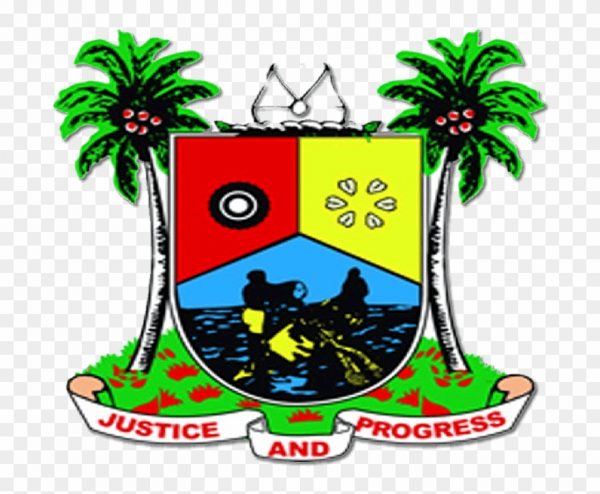In the past ten months and more, the history of Lagos has been subjected to several controversies. It has a connection to the person hood and presidential ambition of Bola Tinubu, the former governor of Lagos State and flag bearer of the All Progressives Congress (APC) and the claims that he built Lagos, Nigeria’s largest economy. For posterity’s sake, necessity is laid upon the historian to offer clarity to controversial issues of history. The question of who built Lagos is an interesting topic to review.
Read more about Politics
A large body of work has been written on the history of Lagos, by both Nigerians and Europeans. To start with, Lagos has been in the canons of history as one of the prosperous lands in West Africa since the 18th century during the period of the slave trade. The Slave trade played a great role in the historic fortunes of Lagos and the birth of the Kingdom of Lagos, one of the elite kingdoms that rose to its apogee during the reign of Oba Akintoye in the mid-1800. Lagos was among those kingdoms that transited from slave trade to legitimate, hence, got involved in massive export of cocoa, fish, coconut and palm produce before and during the advent of colonialism.
In 1862, Lagos became a British colony and enjoyed the earliest modernization amenities courtesy of the British Crown. Before the colonization of Lagos, there was a surge same in the rise of returnee slaves from Bahia in Brazil to Lagos. These slaves known as Amaros, Saros or Agudas were responsible for speeding up the development of Lagos as most of them has been trained in various professions such as architecture, engineering, and in various craftsmanship. The Saros were responsible for the building of modern buildings such as markets, stalls, churches, schools, etc. Again, these returnee slaves were known to move to swampy areas and developed them. Most of the notable returnee-slave families made up the elites of Lagos State.
Sign up for the Connect Nigeria daily newsletter
They included the Agudas, the Cokers, the Rhodes, the Macaulays (the family of the first nationalist, Herbert Macaulay), the Beys, the Thomases, the Georges, etc.
In 1914, when the Northern and Southern Protectorate was amalgamated, Lagos was set to experience a massive influx of migrants within and outside the country. By the 1940s, Lagos had grown into one of Africa’s most powerful metropolis and a hub that accommodated various multi ethnic groups in Nigeria as well as other immigrants from West Africa and beyond. Diverse colonial records as well as pictorial documents showed Lagos as a hub that was comparable to elsewhere in Europe. By the late 1940s, the state had had a functional telephone and telegraph system. Multiple post offices and plazas were in place, it was a busy place as usual, just like New York. Without forgetting, Lagos was the capital of Nigeria between 1914 and 1991 with all the colonial projects and infrastructures infused into it.
As colonial rule winded down in 1960, Lagos was no doubt the most powerful and most important state in Nigeria. Despite democratic rule being truncated following the two coups of 1966 and the civil war of 1967-70, Lagos enjoyed all the perks of military rule until the capital of the country was moved to Abuja in 1991. However, in those intervening periods of military rule, Lagos has had the luck of being blessed with good governors such as Lateef Jakande (October 1979 – 31 December 1983) and Buba Marwa (August 1996 – May 1999). Records remain clear that these governors were remarkable in their administrations and have not enjoyed the credit of being the builder of Lagos.
Register to attend the Connect Nigeria Business Mixer
For instance, during the administration of Buba Marwa, he carried out programs such as “Operation 250 Roads” which incredibly improved motoring conditions. He revamped public health institutions and ensured that free malaria treatment that was available to all. His administration upgraded infrastructure in poor neighbourhoods. He proclaimed an edict to regulate rents, stopping the “Jankara” method of eviction of tenants and ensuring that due process was followed. Marwa became well esteemed in Lagos because of “Operation Sweep”, a joint police and military venture that helped ameliorate Lagos’ notorious crime rate.
In conclusion, upon return to democracy in 1999, Tinubu was elected governor of Lagos state. Under his tenure, crime rates were high as thousands of thugs were introduced into the state, while millions of Lagosians lived in poverty and squalor. However, some achievements were said to be recorded such as building of roads, but it was the administration of Babatunde Raji Fashola (2007-2015) that gave Lagos the face lift it enjoys currently. The introduction of the modern-day electronically-controlled bus system known as BRT was the work of Fashola as well the revamping of public health, local government administration and education.
Featured Image Source: Ben Television
Got a suggestion? Contact us: [email protected]


